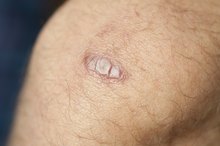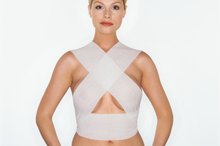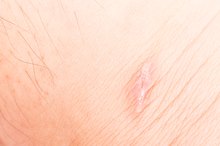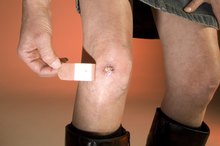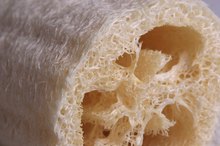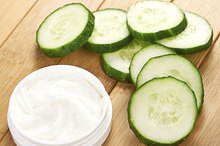What does fact checked mean?
At Healthfully, we strive to deliver objective content that is accurate and up-to-date. Our team periodically reviews articles in order to ensure content quality. The sources cited below consist of evidence from peer-reviewed journals, prominent medical organizations, academic associations, and government data.
The information contained on this site is for informational purposes only, and should not be used as a substitute for the advice of a professional health care provider. Please check with the appropriate physician regarding health questions and concerns. Although we strive to deliver accurate and up-to-date information, no guarantee to that effect is made.
How to Apply Pressure for Keloid Scars
Keloids form when scar tissue continues to grow over a healed wound. These scars can appear months after a wound has healed and can get larger over time 2. Keloid scars respond to several different types of treatment, including corticosteroid injections, laser therapy, cryotherapy and silicone tapes or sheets. A doctor performs most effective keloid scar treatments, but you can treat keloids at home with silicone products that put pressure on the scar. The silicone in these products also helps reduce itching and pain. While applying pressure won’t completely eliminate a keloid in most cases, it can help make it smaller and less noticeable.
Wash the scarred area with warm water and a mild soap. Pat the area dry with a clean towel or allow it to air dry.
How to Use Vaseline to Care for a Scar
Learn More
Apply the silicone sheet directly over the keloid, according to the manufacturer’s directions. Most silicone sheets are self-adhesive.
Wear the sheet over the keloid for 12 to 24 hours a day for at least two to three months to help the scar shrink.
How to Reduce a Keloid
Learn More
Wash the silicone sheet and your scar daily. You can use the same silicone sheet until it starts to break down, which can help you save money, since most silicone products for scars are expensive.
Tips
Apply silicone sheets as soon as possible to encourage the best results. Doctors and surgeons sometimes advise people prone to keloids to begin pressure treatment shortly after surgery. Talk to your doctor or dermatologist about other treatments for your keloid if you’re not satisfied with the results from applying pressure with silicone sheets.
Warnings
Do not apply silicone sheets to open wounds.
Related Articles
References
- FamilyDoctor.org; Keloids; February 2011
- AcneNet: Raised Acne Scars: Treatment Can Ease Pain, Diminish Scars
- “American Family Physician”; Management of Keloids and Hypertrophic Scars; Gregory Juckett, M.D., M.P.H., et al.; August 2009
- Gauglitz GG. Management of keloids and hypertrophic scars: current and emerging options. Clin Cosmet Investig Dermatol. 2013;6:103–114. doi:10.2147/CCID.S35252
Writer Bio
Amanda Knaebel is a self-professed gadget geek and loves all things tech, both new and old. Amanda has been working as a freelance writer for over 10 years on topics including technology, health, fitness, nutrition, gardening and many more. She has also worked with Fortune 50 tech and financial companies, both in technical support and content production.

